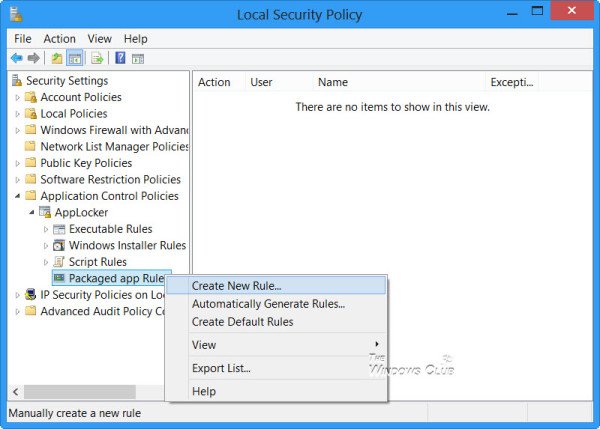

Configure applocker windows#
So click on each of the categories “Executable Rules”, “Windows installer Rules”, “Script Rules”, “Packaged app Rules” and “Create Default Rules”.ĬOMPUTER > Policies > Windows Settings > Security Settings > Application Control Policies > AppLocker > Packaged app Rules When you enforce AppLocker to run but don’t want anything to be restricted yet you will probably start whith this step anyway. Problem: AppLocker Rules Still Enforced After the Service is Stoppedīut what can we do? There are several ways that can resolve this issue. The explanation can be found in the below TechNet article When I was done with the demo I just deleted the policies and disabled the service in one step which is the actual cause that AppLocker kind of breaks afterwars. This szenario happened very often to me because I handled AppLocker in the wrong way after my workshops. Although the AppLocker enforcement is disabled.
Configure applocker windows 10#
But sometimes AppLocker kind of “breaks” my Windows 10 start menu and stops Apps from strarting up. Furthermore it’s the recommended tool for the configuration of unwanted / not needed apps within Windows 10. I really love AppLocker because it’s super simple, reliable and enterprise ready in terms of administrative overhead. Remove-JCCommandTarget -CommandID $AppLockerCommandID -SystemID $agentconf.Windows 10 AppLocker Policies still affect after disabling the service Pirate,įrom time to time I consult customers in the configuration of Windows 10 AppLocker. # Remove the hardened device from the Command itself # Execute the Command to harden the device # Apply AppLocker via JumpCloud CommandĪdd-JCCommandTarget -CommandID $AppLockerCommandID -SystemID $agentconf.systemKey It's the same approach: We will add a t rigger to the JumpCloud Command and make it consumable within the PowerShell Module.

Just like in my previous article about Windows Hardening, you can apply this policy during the deployment before issuing the device to a user. In our example here, we will deny the execution of MS Teams ( because I prefer Slack) and MS Paint. Stop there and in a next step you can simply cleanup the XML-file by removing unnecessary lines ( "NotConfigured") which would lead to a failed application of the rules. You can follow the instructions in the article until " Creating the Policy". Generating the XML FileĪs this is well documented here, I won't repeat the whole content. Simplify creating and managing AppLocker rules by using Windows PowerShell.įirst you will need to create your Package App Rule (as an example) to come up with an XML-file containing the restrictions which we will apply later via a JumpCloud Commands using PowerShell and carrying the XML as an additional payload.Create rules on a staging server, test them, then export them to your production environment and import them into a Group Policy Object.Use audit-only mode to deploy the policy and understand its impact before enforcing it.For example, you can create a rule that allows all users to run all Windows binaries, except the Registry Editor (regedit.exe). Assign a rule to a security group or an individual user.You can also create rules based on the file path and hash. Define rules based on file attributes that persist across app updates, such as the publisher name (derived from the digital signature), product name, file name, and file version.


 0 kommentar(er)
0 kommentar(er)
